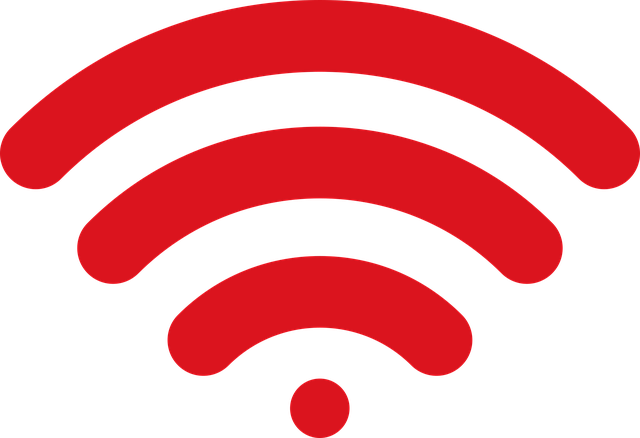Pak vs WI: Captaincy Strategies in International Cricket

The Pak vs WI cricket series highlights contrasting leadership styles between Babar Azam and Jason H…….
Your Tech Heartbeat for Pak Vs Wi in Karachi
Stay informed with the fresh Pak Vs Wi insights and highlights on pak-vs-wi.karachi-pakistan.com. Explore specialized content.
In an era defined by rapid technological evolution, the world of digital infrastructure is witnessing a pivotal confrontation: Pak (Packetized Architecture) versus WI (Wireless Integration). This burgeoning debate revolves around the optimal approach to connect and facilitate data exchange in an increasingly interconnected global network. The battle between Pak and WI encompasses a complex interplay of technology, economics, policy, and real-world applications, shaping the digital landscape as we know it.
This article aims to dissect this fascinating rivalry, exploring its historical roots, global implications, economic drivers, technological innovations, regulatory frameworks, and the challenges that lie ahead. By delving into these aspects, we will uncover the intricacies of Pak vs WI and its profound impact on our digital future.
Pak (Packetized Architecture): At its core, Pak refers to a data transmission methodology where information is divided into small packets, each containing addressing and routing information. These packets are then transmitted independently over a network, allowing for efficient and flexible data exchange. The Internet Protocol Suite (TCP/IP) is a classic example of Pak architecture, enabling the seamless connectivity that underpins our digital world.
Wireless Integration (WI): WI, on the other hand, pertains to the technology and systems that enable wireless communication, eliminating the need for physical cables or wires. This includes various wireless standards such as Wi-Fi, Bluetooth, and cellular networks, which have revolutionized how we access and transmit data. WI offers unparalleled mobility and accessibility, allowing devices to connect and exchange information without physical constraints.
The Pak vs WI debate arises from contrasting approaches to network connectivity. Pak advocates for a robust, standardized infrastructure based on packets, ensuring high reliability and scalability. In contrast, WI champions flexibility, mobility, and convenience, enabling users to access data and services wirelessly from virtually anywhere.
The influence of Pak vs WI extends far beyond technical discussions, with significant global implications. Here’s a breakdown of key trends:
Digital Divide: One of the most prominent outcomes is the growing digital divide between regions with robust Pak infrastructure and those lacking widespread WI access. Developed nations often lead in Pak adoption, ensuring high-speed internet accessibility through fiber optics and advanced wireless networks. Conversely, developing countries may struggle to bridge the gap due to limited resources and infrastructure gaps, leading to disparities in digital connectivity.
Urban vs Rural: This divide is further exacerbated by geographical factors. Urban areas typically benefit from advanced Pak and WI technologies, while rural regions often lag behind due to lower population densities and infrastructure costs. Governments worldwide are increasingly focusing on initiatives to bring high-speed internet to underserved rural communities to foster digital equity.
Global Wireless Growth: The adoption of wireless technologies is skyrocketing globally. According to a 2022 report by Statista, there were over 8.6 billion mobile phone subscriptions worldwide in 2022, with cellular network coverage expanding to even remote areas. This rapid growth underscores the undeniable appeal and necessity of WI for connecting people and devices globally.
5G Revolution: The rollout of 5G technology is a game-changer, offering unprecedented wireless connectivity with ultra-fast speeds and low latency. This fifth-generation wireless standard is expected to revolutionize industries such as autonomous vehicles, remote healthcare, and the Internet of Things (IoT), further blurring the lines between Pak and WI.
The economic aspects of Pak vs WI are crucial in understanding its global impact. Here’s a closer look:
| Factor | Pak Dominance | Wireless Leadership |
|---|---|---|
| Infrastructure Investment | High initial investment required for laying fiber optic cables, especially in urban areas. | Significantly lower costs associated with deploying wireless networks, making them more accessible for rapid expansion. |
| Market Penetration | Established dominance in core internet connectivity, particularly in developed regions. | Rapidly growing market share, especially with the proliferation of smartphones and IoT devices. |
| Revenue Streams | Primary revenue generation from data transfer fees and subscription services. | Diversified revenue models, including mobile plans, data bundles, and advertising. |
| Global Reach | Strong presence in regions with well-established telecommunications infrastructure. | Global leadership in wireless coverage, catering to a vast customer base worldwide. |
The competition between Pak and WI providers has sparked intense market activity, driving innovation and investment. Telecom giants are investing heavily in both Pak and WI technologies to maintain their competitive edge. For instance, Verizon’s 5G network rollout competes with T-Mobile’s wireless services, while AT&T expands its fiber-optic network to stay relevant in the Pak space.
Technological breakthroughs are at the heart of the Pak vs WI evolution, continuously pushing the boundaries of what’s possible.
Pak Innovations:
Edge Computing: This approach brings computation and data storage closer to the user, reducing latency and improving response times for real-time applications. Edge computing is vital for technologies like autonomous vehicles and remote surgery, where low latency is critical.
Software-Defined Networking (SDN): SDN allows network administrators to manage and control network traffic more efficiently, enabling dynamic routing and improved performance. This technology is essential for handling the complex demands of modern networks.
Wireless Breakthroughs:
5G and Beyond: As mentioned earlier, 5G is a significant leap forward, offering speeds up to 20 times faster than 4G LTE. The development of 6G is already underway, promising even higher data rates and improved latency, enabling new frontiers in technology.
Wireless Sensor Networks (WSN): WSNs consist of low-power sensors that collect and transmit data wirelessly over long distances. These networks have diverse applications, from smart cities to environmental monitoring, enhancing connectivity at the edge of the network.
The development of Pak vs WI is not just a technical or economic matter; it is heavily influenced by policy and regulatory frameworks worldwide.
Spectrum Allocation: Governments play a pivotal role in allocating wireless spectrum, determining which entities can operate on specific frequencies. This allocation affects the reach, speed, and capacity of WI services. Efficient spectrum management is crucial for ensuring fair competition and consumer benefits.
Data Privacy and Security: With increasing data transmission and collection through Pak and WI, data privacy and security have become paramount. Governments worldwide are introducing stringent regulations, such as the GDPR in Europe, to protect user data and ensure secure network operations.
Net Neutrality: The concept of net neutrality seeks to treat all internet traffic equally, regardless of content or application. Regulatory bodies worldwide are grappling with this issue, as it impacts how Pak and WI service providers can monetize their networks.
Despite its advantages, both Pak and WI face significant challenges that could hinder their widespread adoption and acceptance.
Pak Concerns:
Latency: In certain applications requiring ultra-low latency, such as high-frequency trading, Pak’s inherent delay can be a drawback. Edge computing addresses this to some extent but remains a challenge for time-sensitive operations.
Network Congestion: As more devices and users join the network, Pak infrastructure may struggle to handle peak traffic, leading to congestion and reduced performance.
WI Challenges:
Coverage Gaps: Despite global progress, WI coverage is still inconsistent in remote areas or regions with poor infrastructure. This limitation can hinder the widespread adoption of wireless technologies.
Security Vulnerabilities: Wireless networks are susceptible to various cyberattacks, such as hacking and signal jamming. Ensuring secure connections, especially in the era of IoT, remains a critical challenge.
Let’s explore some successful implementations of Pak vs WI technologies and the insights they offer:
Case Study 1: Smart Cities – Amsterdam, Netherlands:
Amsterdam has become a global leader in smart city initiatives, leveraging both Pak and WI technologies to enhance urban living. The city deploys sensor networks for traffic management, waste collection optimization, and energy-efficient street lighting. Real-time data collected through Pak infrastructure enables efficient city services, while wireless sensors provide edge connectivity for precise applications. This integration has improved Amsterdam’s sustainability, safety, and livability.
Key Takeaways:
Case Study 2: Telemedicine – Rural India:
In remote areas of India, wireless technology has revolutionized healthcare access. Non-profit organizations have implemented telemedicine solutions, enabling doctors in urban centers to consult patients in rural locations over secure video links. This WI-based approach has improved healthcare delivery, especially for specialized services that were previously unavailable in underserved regions.
Lessons Learned:
As we peer into the future, several trends and developments will shape the Pak vs WI narrative.
Hyperconnectivity: The Internet of Things (IoT) is poised to connect an estimated 25 billion devices by 2030. This hyperconnected world will rely heavily on both Pak and WI technologies for data transmission and device communication. Edge computing will play a pivotal role in handling the massive data volumes generated by IoT devices.
5G and Beyond Rollout: The global rollout of 5G will create new possibilities for applications like augmented reality (AR), virtual reality (VR), and autonomous vehicles. As these technologies mature, they will further emphasize the need for reliable and low-latency connections, challenging Pak and WI providers to innovate continuously.
Cloud Computing Integration: Cloud services are becoming integral to both Pak and WI ecosystems. Cloud computing provides scalable resources for data storage, processing, and application deployment, enabling flexible and efficient network operations.
The debate between Pak and WI is not a competition to be won but a collaboration to shape the future of digital connectivity. Both technologies are essential components of our interconnected world, each with its strengths and unique contributions.
As we move forward, the key lies in fostering synergy between Pak and WI:
In conclusion, Pak vs WI is not a battle but a dynamic interplay that defines our digital age. By embracing collaboration and innovation, we can harness the full potential of these technologies, shaping a future where connectivity knows no bounds.

The Pak vs WI cricket series highlights contrasting leadership styles between Babar Azam and Jason H…….

Crafting effective cricket strategies for Pak vs WI matches requires understanding key team dynamics…….

Weather conditions significantly impact Pakistan (Pak) vs West Indies (WI) cricket matches due to co…….

Predicting outcomes in Pak vs WI Test matches requires a blend of historical trends, strategic analy…….

The historic rivalry between Pakistan and West Indies (Pak vs WI) in cricket is defined by home adva…….

The Pak vs WI series demonstrated the significant impact of player injuries and suspensions on tourn…….